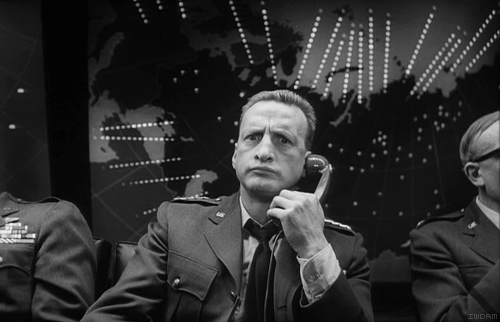For social media companies, insecurity is an integral part of their business model. It’s all down to how they work. They want to sell advertising and their rates are determined by the popularity of the pages where the ads run. More popular pages means higher ad rates, so anything that boosts popularity also boosts revenue for the social media companies.
Of course, when accounts that are liking and following are found to be fraudulent, advertisers cry foul and demand a purging of those fake accounts and also a reduction in their ad rates. This creates an incentive for social media companies to obscure account ownership so that fake accounts are less likely to be discovered. There’s also an incentive to engage in clickfraud, but I’ll pass over that for now. Instead, I’d like to focus in on how those fraudulent accounts can do more than just hike up revenues.
The Russian intelligence agency Федеральная служба безопасности Российской Федерации (ФСБ) – FSB to English-speakers – has made use of misinformation and agitprop since it was the FSK, and before that the KGB, and before that the MGB, and before that the NKVD, and before that the NKGB, and before that the Cheka, and before that the Okhrana. One could say that misinformation and agitprop have been hobbies of Russian intelligence agencies for about 130 years. What is new for this age are the avenues available to the FSB to spread its poison messages.
Before social media concerns, Russians wishing to whip up extremist political movements and create internal discord in Western democracies had to buy their own presses and pay for their own mouthpieces, which could be quite expensive. If one of those were unmasked, then the expensive operation would be compromised and that expense and effort would go to waste.
But with FaceBook and Twitter and blogs, the FSB now has drastically reduced costs and much higher levels of cover. It’s Agitprop as a Service! Consider how easy it is to run multiple fake online accounts, compared to hiring multiple agents. These accounts generate interest and activity on social media, so they drive up ad rates – the firms that would be policing them in an authoritarian regime are protecting them in a capitalist system.
Even better for the FSB, the ability of extremist groups – particularly the far right – to sequester themselves from other news sources means that, once a message is injected into their media echo chambers, it will be repeated often enough so that, in the observation of Josef Goebbels, it will be held up as a truth. What shows up on RT.com will be tweeted and retweeted by FSB accounts active in far-right forums and will soon be heralded as non-fake news in outlets such as Fox, ZeroHedge, and Breitbart.
Back when ZeroHedge was more focused on the financial misdeeds of large banks in the wake of the Panic of 2008, I was an avid reader of stories posted there. But something changed over time, particularly in the run-up to the 2016 election in the USA. It went from examining financial issues as its primary focus and slid deep, really deep into pro-Trump positions with lots of posters on its boards echoing comments that could be classified as pro-Russian, anti-Semitic, racist, neo-fascist, and/or a combination of the previous.
The slide in bias was obvious to me. I’ve been a follower of non-corporate media since the 1980s, and I know the difference between an investigative journalism piece and a partisan propaganda paper. ZeroHedge had definitely lost a lot of the former and had gained a lot of the latter. As the onslaught of Russophilism, antisemitism, racism, and neofascism increased, I felt a need to get out of that news source and seek out alternatives. In so doing, I did a lot of searching. In those searches, I was stunned to see how many other outlets were parroting the sludge from ZeroHedge, like they were sheep from Animal Farm bleating out “four legs good, two legs better!”
From all this agitation in stirring up the far right, Russia knows it is destabilizing America. The heads of the FSB know that the American far right will prove Pushkin right at every turn: it will reject ten thousand truths in order to cling to the lie that justifies itself. This is how I know Judge Moore is highly likely to win the Senate election in Alabama. The Russian Twitter choir is singing his praises and millions of far-right users of social media are echoing those sentiments, actively and belligerently.
Judge Moore, of course, is a hand grenade being lobbed directly at the US Senate. The man has shown a pattern of serial sexual predation against minors. If he wasn’t running as a Republican for the Senate, he’d be the focus of a true crime show right now. Russian tweets and far right echoes claim falsely that his accusers have either forged evidence against him or recanted their claims. Those lies allow his supporters to push hard for his election. If Moore is elected, it will roil the Senate as many senators will demand that he not be seated and that Alabama send a different favorite son to the Capitol. Each house of Congress can do just that, accept or reject the people sent to it – and Moore is ripe for rejection.
If Moore is rejected, it will split the Republican party even deeper. The Republicans are already incapable of putting together a coherent legislative agenda. With a Moore rejection, it will be practically open war between the different halves of the Republican party.
If Moore is not rejected, it will split the Republican party even deeper, but in a different way. Instead of Moore’s supporters repeating Russian propaganda that they were robbed, it will be outraged moderates, unable to stomach being in the same political caucus as a sexual predator. Bear in mind that the stalking of multiple daughters of single women, all around the same age, all in roughly similar ways, is an actual pattern of sexual predation. We have documentation of this. We have multiple testimonies to this effect. This is a sexual predator that the Russians, through insecure social media, are helping to force down the GOP’s throat.
When we look back to what happened in Georgia and Estonia in the decade prior to 2016, we see exactly the same thing. We see the social media misinformation. We see the political manipulation of extremists. When we look at Ukraine after the USA toppled a pro-Russian government there, we see even Russia providing armed assistance to extremists there. That fact chills me, especially in light of how many on the far right hinted at taking up arms if Trump wasn’t elected in 2016.
I doubt if they actually would have taken up arms on their own, but if they were whipped up by their social media echo chamber and shipped a few thousand AK-15s, maybe they would cross over that tipping point. If that were to happen, I have no doubt that a US Army would crush that insurrection… and then spend decades dealing with low-level guerrilla warfare, all fueled by continued echoing of Russian lies in social media echo chambers.
While there is increasing agitation on the left in the form of the antifa movement, there just isn’t as much militancy in the American left, especially after the legacy of peaceful, antiwar protests. These are not minds that will have much fertile soil for violent rhetoric. They’re also more likely to turn out one of their own if he or she is found to have feet of clay. Witness their abandonment of big donors found to be serial sexual harassers. Witness their pressure on their own political caucus to resign from office, rather than persist in running for it or remaining in place.
No, the fertile ground is in the neofascist mind. The Russians make those pushes in Greece, in Germany, and in the USA. And while I find Steve Bannon to be more of an Austrofascist than a Nazi (the strong affinity for Catholicism is a dead giveaway for Austrofascists), I don’t think such fine details matter either to the Russians or to the minds the Russians poison every day with their lies.
So how do we solve this problem? The market won’t solve it. In fact, the free market will fan these flames because the business model of Twitter and other outlets is to spread misinformation if that means more ad revenue. But in a world of multiple email addresses, how do we limit a person to just one Twitter account? In a world of VPNs and TOR exit nodes, how do we keep too many FSB-driven accounts from affecting social media? When these fake accounts actually started out years ago with softer agendas, and have loads of historical content, how do we build an algorithm that can identify a friend from a foe? Or a friend from a foe yet to reveal itself?
Hamilton 68 http://dashboard.securingdemocracy.org/ is a project that, instead of looking for the artillery shells of propaganda, seeks out the guns. While it does not claim to have discovered all sources of Russian disinformation on social media, it has found some significant signals amidst the noise. There’s some hope yet in the intel they are able to derive from extensive signals analysis. This is what any good intel agency does: read all the news to see where stories originated and how they are disseminated.
Right now, the Russian social media barrage is striving to elect Roy Moore to the US Senate. But, merely by getting the Republicans to cling to him like a piece of driftwood in a shipwreck, they’ve already demonstrated their control over that political faction. In the days and weeks to come, be certain that the Russians will continue to tug on that leash and the far right will follow every jerk and tug.
Insecure Social Media, Russians, and US Elections: Agitprop as a Service.











